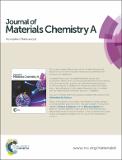Files in this item
Morphology and local electrical properties of PTB7:PC71BM blends
Item metadata
| dc.contributor.author | Alekseev, Alexander | |
| dc.contributor.author | Hedley, Gordon James | |
| dc.contributor.author | Al-Afeef, Alaa | |
| dc.contributor.author | Ageev, Oleg A. | |
| dc.contributor.author | Samuel, Ifor David William | |
| dc.date.accessioned | 2016-03-12T00:01:20Z | |
| dc.date.available | 2016-03-12T00:01:20Z | |
| dc.date.issued | 2015-04-28 | |
| dc.identifier | 211007653 | |
| dc.identifier | aad9a2eb-fc91-4d10-b5ba-1a48321303d2 | |
| dc.identifier | 000352489200037 | |
| dc.identifier | 84927138698 | |
| dc.identifier.citation | Alekseev , A , Hedley , G J , Al-Afeef , A , Ageev , O A & Samuel , I D W 2015 , ' Morphology and local electrical properties of PTB7:PC 71 BM blends ' , Journal of Materials Chemistry A , vol. 3 , no. 16 , pp. 8706-8714 . https://doi.org/10.1039/C5TA01224D | en |
| dc.identifier.issn | 2050-7488 | |
| dc.identifier.other | Bibtex: urn:84849097e8e573ed422f79b7ac02ecd0 | |
| dc.identifier.uri | https://hdl.handle.net/10023/8415 | |
| dc.description | This work was supported by EPSRC (EP/I013288/1). I.D.W.S. was partly supported by the European Union Seventh Framework Programme under grant agreement 321305 and a Royal Society Wolfson Research Merit Award. Part of the work of A.A. and O.A was supported by Ministry of Education and Science of Russian Federation, project 14.A18.21.0887 and the Russian Government Program of Competitive Growth of Kazan Federal University. Date of Acceptance: 12/03/2015 | en |
| dc.description.abstract | The power conversion efficiency of single layer organic solar cells can approach 10% with blends such as the polymer PTB7 and the fullerene derivative PC71BM. Here the detailed structure of PTB7:PC71BM blends deposited with and without addition of diiodooctane is studied by transmission electron microscopy and scanning probe microscopy. The details of bulk structure, such as the thickness of the layer covering fullerene domains and the grain structure of the film are examined. We find that fullerene-rich domains can be near the surface of the film or buried deeper, near the substrate. The local electrical properties of these blends are studied by conductive atomic force microscopy for different configurations of electrodes. Different power conversion efficiencies of blends with and without diiodooctane are explained in terms of local photoconductive properties. | |
| dc.format.extent | 9 | |
| dc.format.extent | 2339464 | |
| dc.language.iso | eng | |
| dc.relation.ispartof | Journal of Materials Chemistry A | en |
| dc.subject | QD Chemistry | en |
| dc.subject | NDAS | en |
| dc.subject.lcc | QD | en |
| dc.title | Morphology and local electrical properties of PTB7:PC71BM blends | en |
| dc.type | Journal article | en |
| dc.contributor.sponsor | EPSRC | en |
| dc.contributor.sponsor | European Research Council | en |
| dc.contributor.institution | University of St Andrews. School of Physics and Astronomy | en |
| dc.contributor.institution | University of St Andrews. Condensed Matter Physics | en |
| dc.identifier.doi | 10.1039/C5TA01224D | |
| dc.description.status | Peer reviewed | en |
| dc.date.embargoedUntil | 2016-03-12 | |
| dc.identifier.url | http://www.rsc.org/suppdata/c5/ta/c5ta01224d/c5ta01224d1.pdf | en |
| dc.identifier.url | http://www.rsc.org/suppdata/c5/ta/c5ta01224d/c5ta01224d2.mpg | en |
| dc.identifier.grantnumber | EP/I013288/1 | en |
| dc.identifier.grantnumber | en |
This item appears in the following Collection(s)
Items in the St Andrews Research Repository are protected by copyright, with all rights reserved, unless otherwise indicated.

